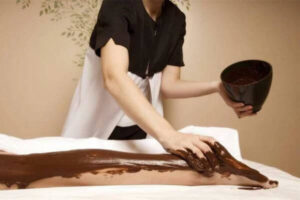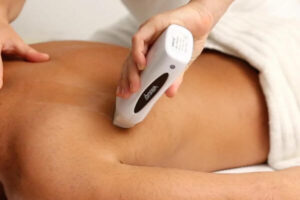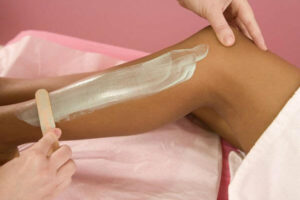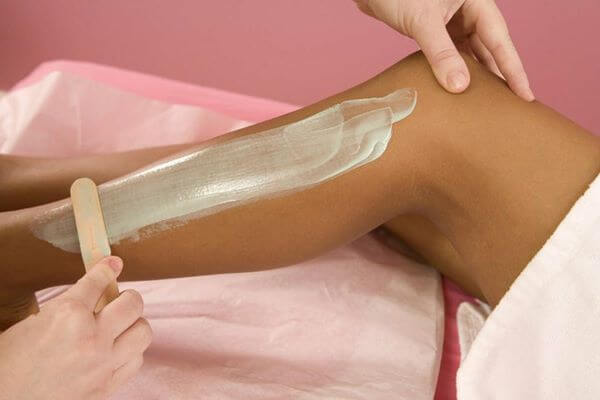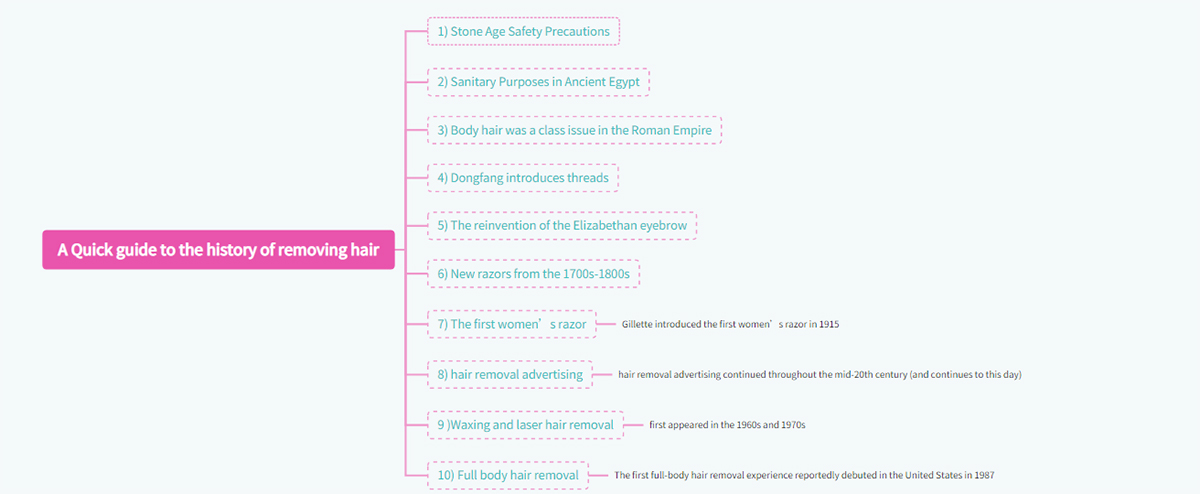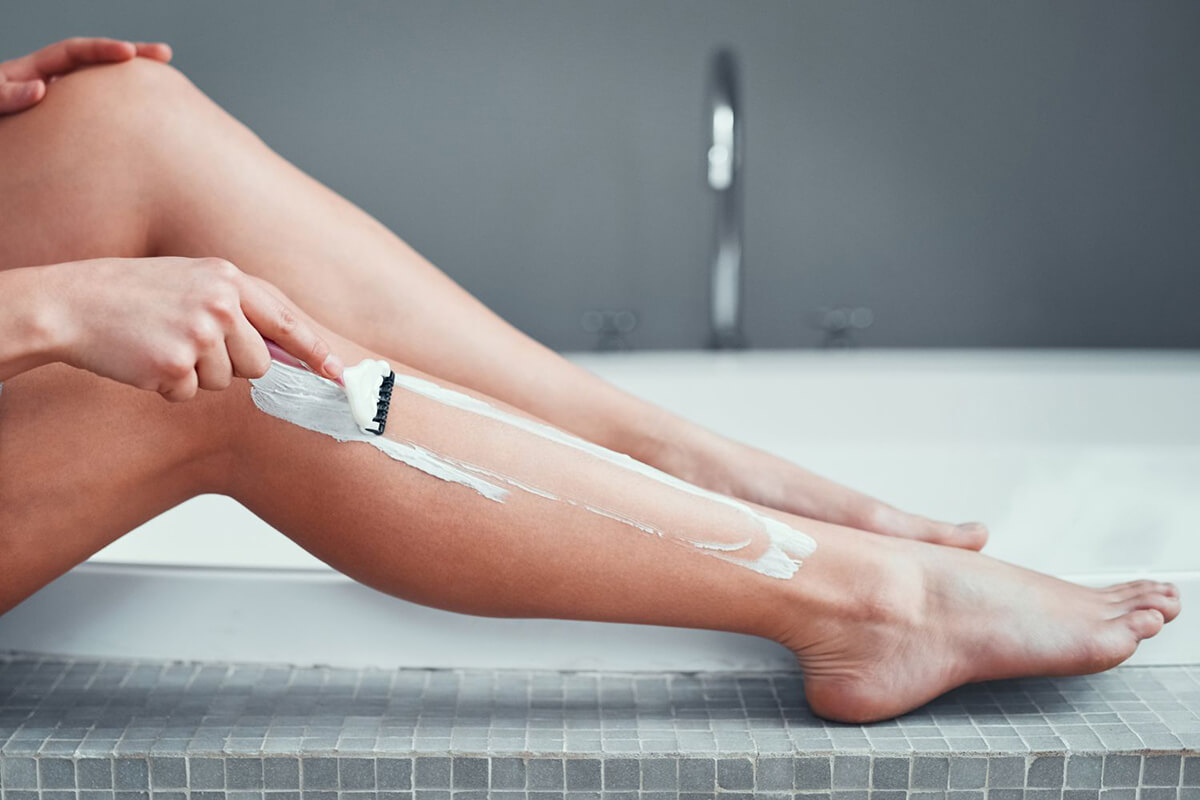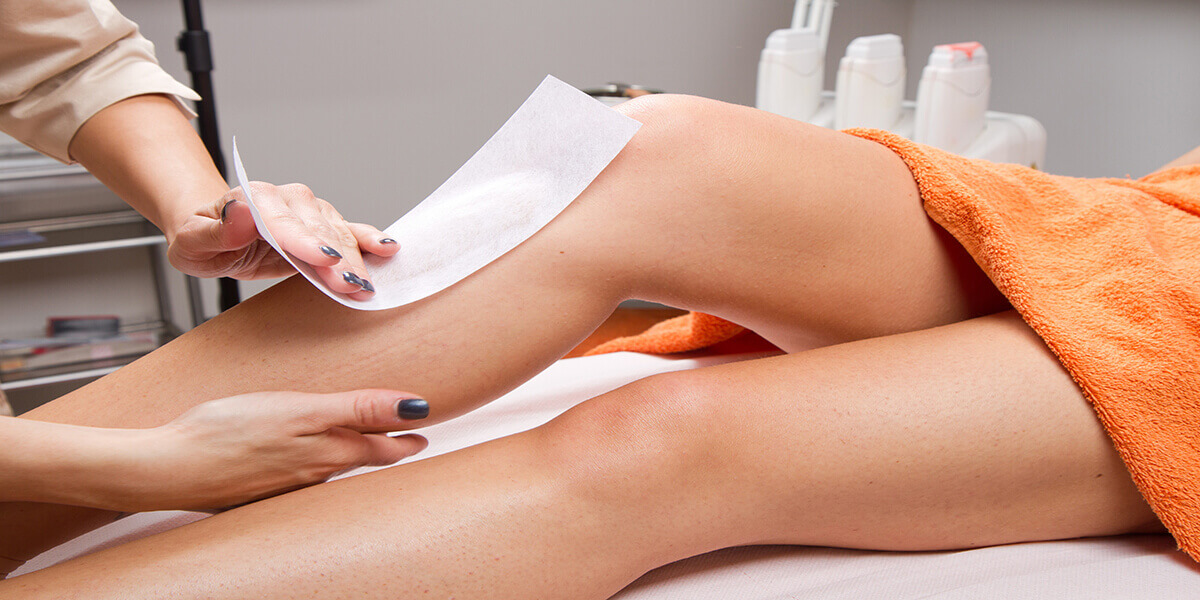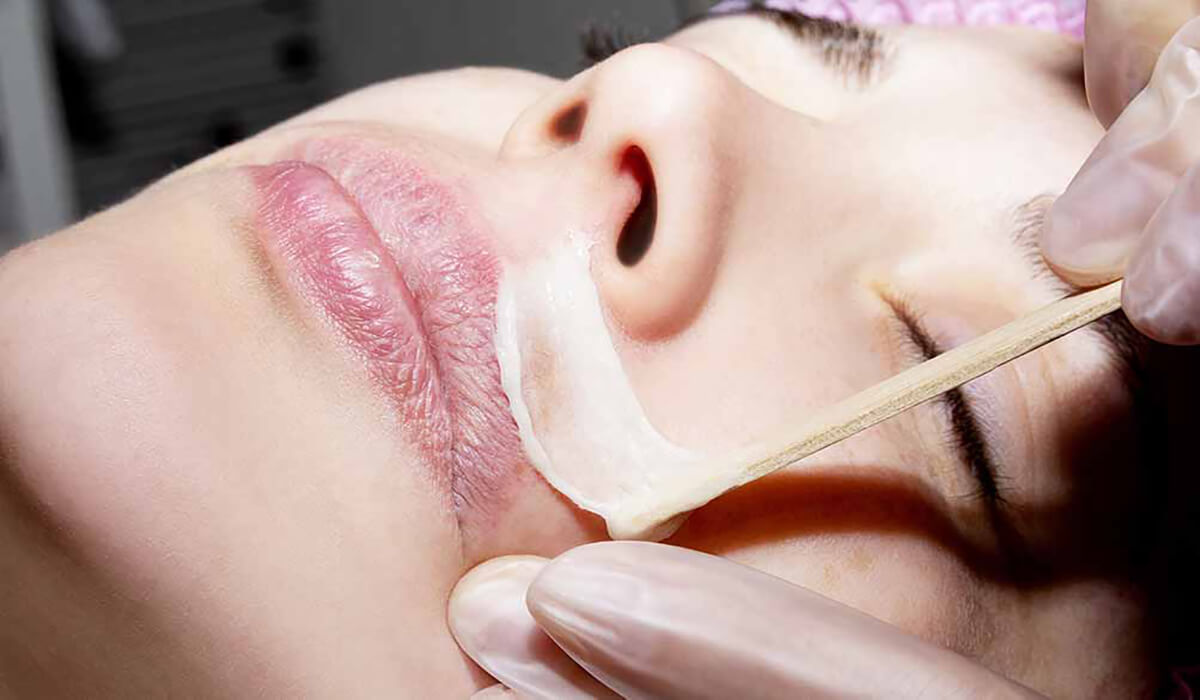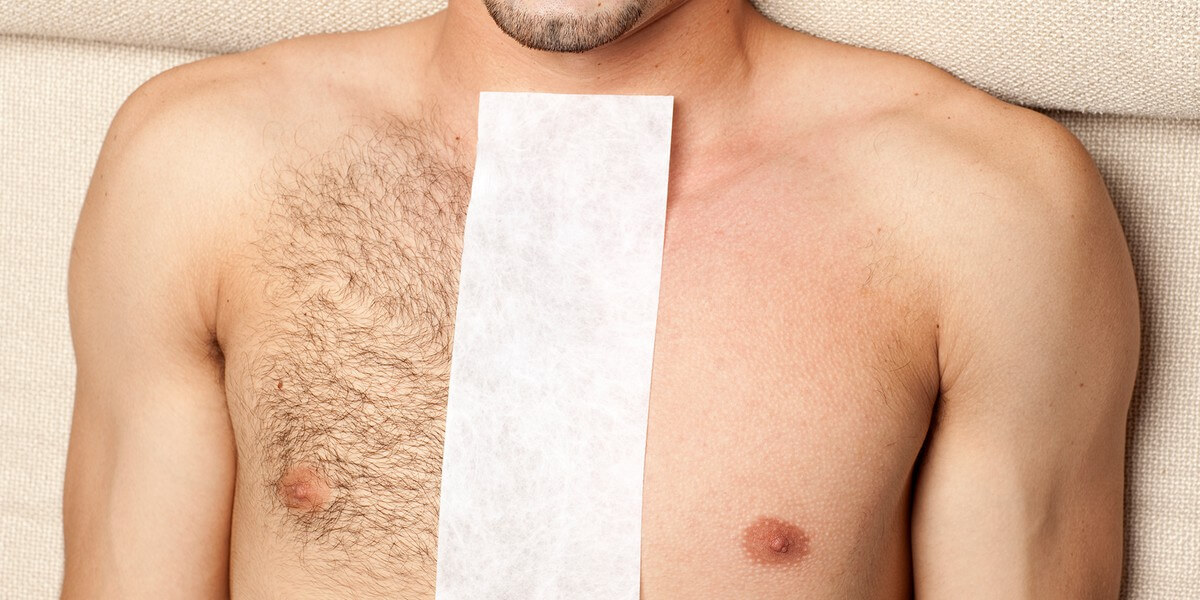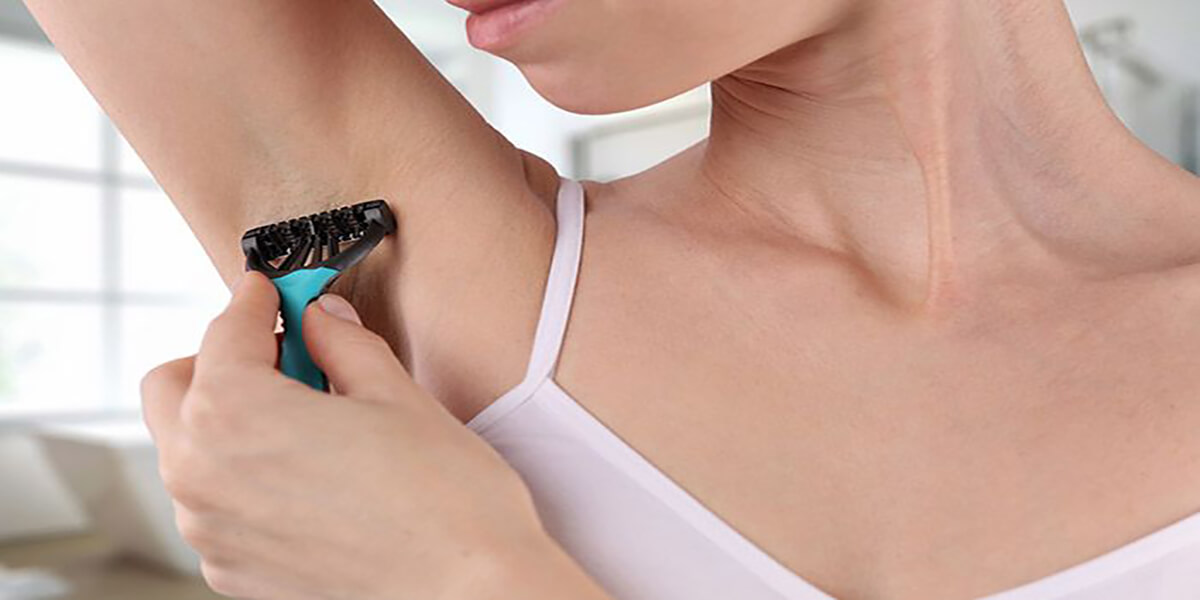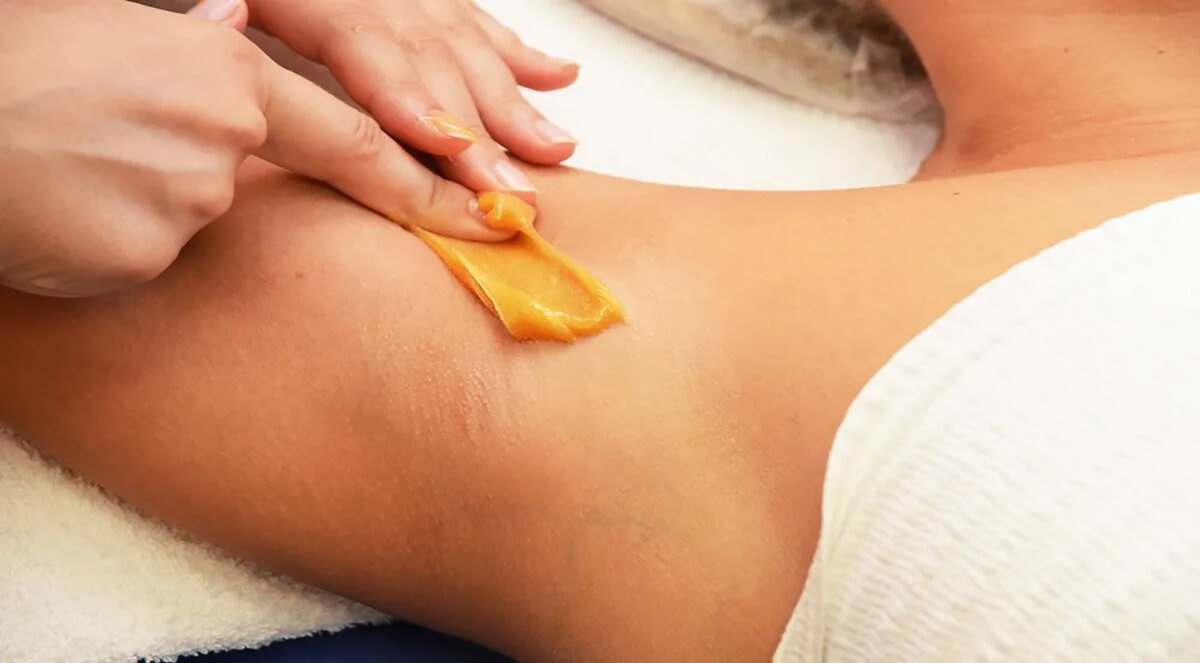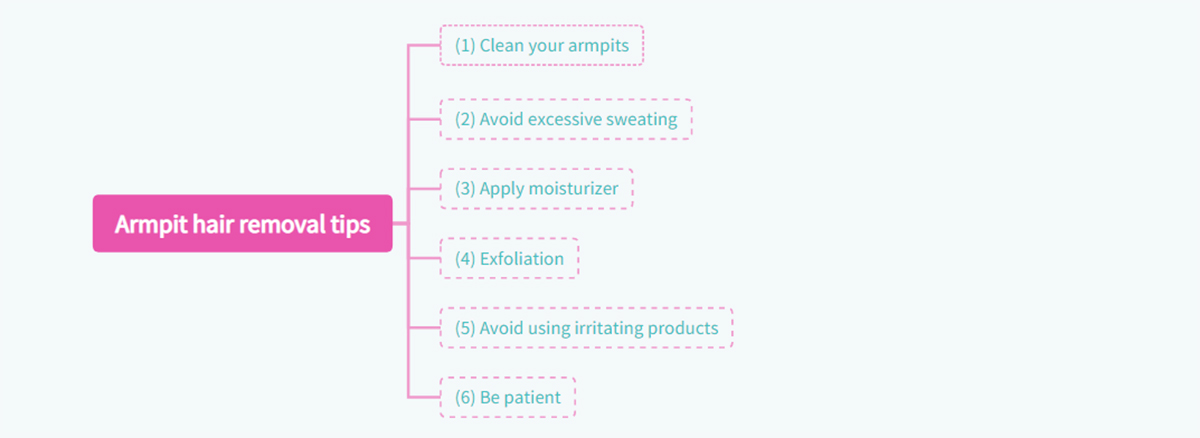Hair removal has been an essential part of personal grooming for centuries, evolving from ancient practices to modern-day techniques. In this comprehensive guide, we will explore the various methods available today for removing hair, tailored specifically for different areas of the body, such as the face, body, and armpits. Whether you’re looking to understand the history behind these practices, learn about the most effective techniques, or discover tips for minimizing discomfort, this guide covers everything you need to know. Get ready to dive into the world of hair removal and find the best solutions that suit your needs.
1. A Quick guide to the history of removing hair
With spas and hair removal centers temporarily closed due to social distancing, many people are choosing to practice hair removal methods at home or let it grow naturally. While the choice to groom your body hair is now a matter of personal preference, the practice has been around for centuries. What started as a safety measure in combat has grown into one of the most popular beauty treatments today. In today’s guide, we’re going to take a look at the history of hair removal. Read on to learn more.
1) Stone age safety precautions
Before hair removal was used for cosmetic purposes, shaving your hair was a survival strategy in the Stone Age. Despite modern descriptions of cavemen and women, archaeologists have determined that they were the first people to undergo shaving. It was believed that shaving during the Stone Age was a safety measure in combat, as the lack of hair on the head and face protected them from the grasp of their opponents. In inclement weather, shaving can also prevent water from accumulating on your skin and freezing, which can cause frostbite.
Unfortunately, the method behind this ancient hair removal technique is a painful one. It requires a man or woman to chip a stone into a sharp angle and then slide it off the face. Alternative tools used included animal teeth, sharp flints, or clam shells as tweezers.
2) Sanitary purposes in ancient Egypt
Ancient Egypt was the first to modernize hair removal thousands of years later. Sugar hair removal was invented during this period, using sugar, water, and lemon juice to make a sticky paste to remove body hair. This laid the foundation for the waxing technique used today, as the paste is applied to the skin, covered with muslin, and the hair is pulled apart. Other tools such as shells or pumice stones are also used to achieve the desired level of hairlessness.
In ancient Egypt, body hair, especially pubic hair, was a symbol of uncivilization and was described as dirty and unhygienic, so many women chose to remove their hair. They also followed the trend set by Cleopatra, who removed all body hair, including the hair on her head, to symbolize social class. Even men preferred to be clean-shaven, as beards or stubble were common among servants and slaves.
3) Body hair was a class issue in the Roman Empire
The ancient Egyptians weren’t the only ones who defined body hair trends by social class. Pubic hair was considered inferior, which explains why ancient Greek statues of women were completely hairless. When hair removal techniques were introduced to the Roman Empire, wealthy men and women used razors, tweezers, pumice stones, and hair removal creams.
However, the practice of removing body hair between women and men began to diverge, as women leaving their private parts exposed symbolized purity and class, while men growing their body hair became a sign of masculinity. This gender gap has persisted throughout the ages.
4) Dongfang introduces threads
Although there is no exact date to mark the origin of the whorl, it has always been part of the ancient tradition. Threading is believed to have originated in Eastern cultures in India and Iran, where it was used to shape eyebrows and remove facial hair on the upper lip, chin, cheeks, and sideburns. This treatment involves twisting two strands together and moving them along the skin, like tweezers, to pull out individual hairs. It is also considered a rite of passage in some civilizations, such as Persia, where threading is called Bande Abru – ” Abru ” means eyebrow, and ” Bande ” is the thread. There, the practice of eyebrow shaping marked a woman’s path to adulthood and was a sign of female masculinity.
5) The reinvention of the Elizabethan eyebrow
In the Middle Ages, Queen Elizabeth I pioneered the idea of facial hair removal in Western culture, influencing women to completely pluck their eyebrows and shave their hairlines to create the illusion of a larger forehead and elongated face. Therefore, many women resort to the bizarre method of soaking bandages in a mixture of ammonia, walnut oil, and vinegar to inhibit hair growth on their foreheads. While facial hair is removed for aesthetic purposes, European women do not shave or wax their body hair.
The decrees of the Catholic Church also affected the way women treated their hair. Wearing long hair is a sign of femininity, but it must be completely hidden in public, otherwise, it is considered immodest.
6) New razors from the 1700s-1800s
The late 18th century ushered in more civilized methods of hair removal. The first straight razor for men was invented by barber Jean Jacques Perret in 1760. Perrette invented an L-shaped wooden razor guard that helps reduce the risk of cutting yourself while shaving. Although this shaver is marketed towards men, women also use this shaver. Dr. Gouraud also invented another method of hair removal when he created Poudre Subtile, one of the first commercial hair removal creams. Then in 1880, King Camp Gillette (his name, not his title) released a straight razor that was safer than Perret’s model, and it quickly evolved into the convenience razor we know today. However, it would be decades before razors specifically aimed at women appeared.
7) The first women’s razor
During World War II, women were unable to wear stockings every day due to a shortage of nylon, which meant they had to go bare-legged every day. This spurred women into the habit of shaving their legs regularly. Gillette introduced the first women’s razor in 1915, called the Milady Décolleté, which came with its own rose velvet packaging. Remington also introduced the first women’s electric shaver in 1940.
8) The impact of hair removal advertising on women
Advertising for hair removal creams became increasingly popular around the time the first women’s razors were introduced. Images in the media, magazines, and movies quickly shaped the standard of beauty for women. In fact, a women’s fashion magazine ran an ad in which a model raised her arms and exposed her armpits. This marked the first time fashion directly influenced how women groomed their body hair.
As hair removal advertising continued throughout the mid-20th century (and continues to this day), women felt more obligated to remove body hair. As you can see from photos of models embracing hairless armpits and bikini lines, the ideal beauty standard for women at the time was an image without body hair. Advertisements for men’s razors also exist, but they focus more on facial hair removal.
9) Waxing and laser hair removal first appeared in the 1960s and 1970s
The most popular method of hair removal for legs and underarms has quickly hit the market. Waxing strips are popular for their efficiency and effectiveness, which has been linked to growing fashion trends involving exposing more skin, such as the rise of miniskirts and hot pants. This is also consistent with the sexual revolution and women’s movement of the 1960s, as women gained more freedom and defended autonomy over their own bodies. On the one hand, many women continued to maintain the clean-shaven, hairless look popular in the 1940s and 1950s; on the other hand, feminists rejected hair removal, opting for natural hair removal.
As beauty trends become more common, new hair removal methods are constantly being developed. The first laser hair removal method was introduced in the mid-1960s, but it quickly fell out of popularity due to its damaging effects. That said, the 1970s eventually brought about the development of transistor devices, making electrolysis and laser hair removal methods safer.
10) Full body hair removal in the 1980s
Although bikinis have been around since the 1940s, their sizes continued to get smaller throughout the 20th century, and by the 1980s, the style became fully mainstream. As exposure increases, there is an increasing desire to remove hair around the bikini line, in addition to other parts of the body such as legs and armpits. Brazilian waxing, a cosmetic treatment that removes all pubic hair, became a standard by the 1980s. The first full-body hair removal experience reportedly debuted in the United States in 1987. Since then, hair removal centers and spas have offered a menu of specialized hair removal treatments covering virtually every hair-bearing part of the body.
11) Hair removal habits from around the world
The grooming habits of American women are now well known. Like most things related to appearance, they are driven by media. Pubic hair removal (and trimming) in the United States seems to be related to the invention of the bikini in the 1960s. Different countries prefer specific methods of hair removal. These may include waxing, shaving, hair removal creams, laser hair removal, or threading. How do women around the world groom themselves? We’re here to tell you!
UK: Waxing and laser hair removal are the most popular in the UK and the US. Shaving is another popular method because it is more accessible, convenient, and less expensive.
Japan: Japanese women prefer to shave only their legs and underarms, leaving their bikini and pubic hair alone. It’s also common to remove facial hair and peach fuzz to achieve a smooth, glassy look.
Australia: Australian women are known for being beach beauties, and what those beach beauties don’t want is unwanted hair. It is not uncommon to remove hair from the legs, underarms, facial hair, and bikini area through laser hair removal or waxing. Australians are so fond of hairless, smooth skin that those who don’t shed their hair are considered outliers.
India: In India, it is now mainly upper-class women who remove unwanted leg, armpit, and pubic hair, and their choice of removal method is mainly hair removal cream. However, as laser technology developed for darker skin tones, laser hair removal quickly became more popular. With the advent of laser hair removal technology, hair removal on the chin, upper lip, underarms, cheeks, and bikini area has become increasingly popular.
Brazil: You might think that the term “Brazilian wax” comes from Brazil, but that’s not the case. It’s American and not very popular in Brazil. The most popular grooming style for Brazilian women is a “landing strip.”
Germany: In Germany, it is common for women to shave their legs, underarms, and bikini area. Just like in America, smooth and hairless people are very popular. Laser hair removal is the most popular method of hair removal because it is the most effective, efficient, and permanent.
China: Until recently, hair removal was not an important beauty ritual in China. Chinese women don’t bother to remove their leg or armpit hair because hair is just part of the body and nothing to be ashamed of. Body hair is considered completely natural. Hair removal methods (mainly for big cities) use hair removal cream or shaving.
As you can see, women in most parts of the world remove at least some body hair. While the areas to be hair-plucked may change based on trends, if time tells us anything, it’s that women will continue to want at least some parts of their bodies to remain hair-free.
2. Ways of hair removal
The above is the development of hair removal history compiled by Auperwel for you. It can be seen that hair removal is not popular in modern times, but originated in the Stone Age. And as the demand for hair removal changes, the methods of hair removal are also gradually increasing.
Hair removal methods range from simple and cheap (such as shaving with a razor) to high-tech and expensive (such as laser hair removal and electrolysis). There are different methods of hair removal for every part of the body, skin type, time commitment, and budget. That said, there are very few ways to permanently remove hair. The hair removal method that’s right for you depends on your needs and preferences. Auperwel has compiled 10 ways to remove unwanted body hair for you. It explains how each hair removal method works and the pros and cons of each method.
1) hair removal methods and their pros and cons
The following introduces you to 10 hair removal methods and their advantages and disadvantages. You may need to try several hair removal methods to find the one that works best for you. Or talk to your healthcare provider to develop an appropriate hair removal strategy for you.
(1) Shaving
Shaving is a way for many people to get started with hair removal at a young age. This is also the most temporary method of hair removal and can last from one to three days.
- How it works: Shaving involves using a razor to remove hair from the skin’s surface. Shavers come in many different styles, from inexpensive disposable razors that are typically used for wet skin to more expensive electric razors that are used for dry skin.
- Pros: A quick, easy, and inexpensive way to remove unwanted body hair is to shave. Most people learn quickly. Disposable razors are widely available and come in many styles. Electric shavers are easy to use.
- Disadvantages: Shaving can cause cuts, cuts, and skin irritation, commonly known as razor burn. The tip of the hair regrowth will be blunt rather than the natural tapered tip, making the hair regrowth more visible. A common side effect of shaving is ingrown hairs.
- Tip: Moisturize your skin first for a more effective shave. Shaving cream, conditioner, and body wash help the razor glide smoothly over the skin, preventing nicks, cuts, and abrasions. If you use shaving cream, remember to rinse the blades between shaves.
Shaving does not thicken or darken the hair shaft, contrary to popular belief. It also doesn’t make hair grow faster or slower.
(2) Pull or pull out
Physically pulling hair out of the follicle is a simple, inexpensive way to remove unwanted hair. This is best for individual stray hairs that are long enough to hold onto.
- How it works: There are many different techniques for pulling or plucking individual hairs. The simplest is to grab a strand of hair with your fingernails and pull. More advanced methods such as tweezing or waxing are explained below.
- Advantages: Pulling out stray hairs with your fingers is fast and free. Physically removing hair will make it take longer to grow back because the hair must grow to the surface of the skin to be visible. Additionally, repeatedly pulling hair out of the follicle may cause enough damage to prevent hair growth.
- Cons: Pulling out strands of hair can cause damage. Some hairs are so stubborn that it may take several attempts to pull them out. Recommended for single hair removal only. For some people, hair-pulling can become a compulsive disorder called trichotillomania.
- Tip: To pull individual stray hairs, wait until the hair is long enough to hold between your fingertips. Hold tightly to the surface of the skin and pull quickly. If you still can’t remove it after several attempts, try another method.
What is trichotillomania?
If you have a strong urge to remove hair from certain areas of your body and feel pleasure or relief when doing so, talk to your healthcare provider. There is a possibility that you may have obsessive-compulsive disorder, a rare condition known as trichotillomania.
(3) Tweezers
Tweezing is a popular way to remove unwanted hair and shape brows. It can take three to eight weeks for hair to grow back after tweezing.
- How it works: Hold the tweezers with your dominant hand and use your other hand to stretch the skin around the hair you want to remove. Use tweezers to grasp the hair close to the skin tightly and pull it out.
- Pros: Tweezing is an effective way to remove hair, eyebrows, nose hair, and stray facial hair. Plucking is cheap because all you need are tweezers.
- Cons: Tweezing can be time-consuming and not very effective on hairy body parts, such as legs.
- Tip: Tweezers come in many styles. The right tweezers depend on your hair type. Flat tweezers are better for individual hairs. Slanted tweezers are better for trimming brows because you can use the flat edges to pluck out multiple hairs at once, or use the pointed tips for more precise results. Pointed tweezers have narrow, angled tips that help with ingrown hairs. Tweezers that combine pointed and angled tips can be used for a variety of hair-plucking jobs.
(4) Waxing
In a salon or at home, waxing can be performed. The wax adheres to the hair, making it easy to remove multiple strands at once. For best results, hair should be at least a quarter of an inch (6 mm) long. It can take three to six weeks for results to appear.
- How it works: Waxing involves applying warm wax to the skin in the direction of hair growth. Place the strip of cloth over the wax, press in, and allow to cool briefly so the hair sticks to it. Then, pull the strip of fabric down quickly in the opposite direction of hair growth, pulling the hair away.
- Pros: In order to remove large amounts of hair at once, waxing is an effective method. Any part of the body can be waxed, including legs, back, chest, lips, armpits, eyebrows, and bikini area.
- Disadvantages: Hot wax can burn skin and should be used with caution. Side effects of waxing include pain, skin burns, redness, irritation, ingrown hairs, infections, and skin tears.
- Tip: Taking Advil (ibuprofen) 30 minutes to an hour before your hair removal appointment can reduce pain and reduce swelling, especially when removing large or delicate areas. To reduce redness and soothe irritation, apply aloe vera to your skin after waxing. Reapply as needed for pain relief.
#1. Contraindications
Waxing should be avoided when taking the following medications, according to the American Academy of Dermatology:
- Isosolentoine (within the past six months)
- antibiotic
- Topical tretinoin (retinoic acid)
These medications can thin the skin, making it more fragile. This may cause the skin to tear when the wax is removed.
(5) Sugar waxing
Sugar wax hair removal, also known as sugaring, is a popular form of hair removal that works on the same principle as traditional hair removal.
- How it works: A natural sugary substance with a honey-like consistency is applied to the skin in the direction of hair growth. Then, place a piece of cloth or paper over the wax and pull it down in the opposite direction of hair growth.
- Pros: Sugaring has the same benefits as waxing but is easier to clean up. The “wax” is made with real sugar and other nourishing, natural ingredients, so it’s water-soluble. It’s easy to clean up with warm water, while traditional wax tends to be more stubborn. Sugar wax can also be made at home using ingredients found in the kitchen (sugar, lemon juice vinegar, and water).
- Cons: Molasses hair removal can be painful and has similar side effects to hair removal, including skin irritation, redness, and ingrown hairs. As with waxing, people should avoid sugar for six months after taking isolation, a drug used to treat cystic acne.
- Tip: Before trying sugaring at home, watch a few videos to learn about the process. Make sure the wax has cooled before applying it to your skin.
(6) Thread processing
Threading is a form of hair removal most commonly used to shape eyebrows. It’s usually performed in a salon, and results can last three to six weeks.
- How it works: Threading is done by folding and twisting a fine cotton or polyester thread, then rolling it over the area of unwanted hair, plucking the hair at the level of the follicle.
- Pros: Threading is fast, precise, and often cheap. Unlike tweezing, which removes hairs one at a time, threading removes short rows of hairs in one go, making it ideal for shaping brows.
- Disadvantages: Threading is difficult to do yourself, so you may need to pay a professional. It hurts just as much as waxing and takes longer, so you’ll have to live with the pain for longer. It can also make the skin red and inflamed but is usually not as irritating as waxing.
- Tip: Apply aloe vera after threading to soothe irritated skin.
(7) Hair removal cream
Creams like hair removers contain chemicals called thioglycolate mixed with sodium or calcium hydroxide that can actually melt your hair. Thioglycolate breaks the chemical bonds (disulfide bonds) that hold skin and hair cells together
- How it works: Apply hair removal cream to unwanted hair areas and leave it on for 3 to 15 minutes. This chemical dissolves the hair and creates a jelly-like substance that is wiped off or washed off after an appropriate amount of time.
- Pros: Hair removal creams are a very effective way to remove unwanted body hair at home. They can be used on large areas of hair, such as legs. Hair removal creams are also very effective on thick, coarse hair and are a common solution for pubic hair removal. The results last longer than shaving.
- Cons: The chemicals in hair removal creams may be abrasive and irritating to delicate skin. There is a strong smell to hair removal creams as well. Be sure to follow package directions and do not leave on the skin longer than directed.
- Tip: Hair removers should be tested on a small area of skin first and allowed at least 48 hours before using on a larger area. You can relieve irritation after hair removal by applying hydrocortisone cream.
(8) Electrolysis
Electrolysis is a permanent form of hair removal performed in a salon. Multiple treatments are required to be effective, and it may take 12 to 18 months to achieve the desired results.
- How it works: Electrolysis uses a fine needle inserted into the hair follicle to apply an electric current to the root of the hair follicle. This burns the hair roots, theoretically preventing them from producing more hair. Each hair follicle must be treated individually, so multiple treatments are often required to completely destroy the follicle.
- Pros: Electrolysis can permanently remove all hair types. Once the treatment is complete, hair will not grow back, so maintenance treatments are not required.
- Disadvantages: Electrolysis can cause harm and has other side effects and risks, including infection, keloid formation, hyperpigmentation (dark skin patches), and/or hypopigmentation (light skin patches). It doesn’t work immediately and it’s expensive.
- Tip: Electrolysis can only be performed by a board-certified dermatologist or a board-certified electrologist. Electrolysis works best when the hair follicle is in the anagen (growth) stage. Shave approximately three days before treatment to ensure anagen hairs are visible.
(9) Laser hair removal
The procedure should be performed by a professional if you want to get rid of your hair with lasers. It takes two to six treatments, lasting four to six weeks, to be fully effective.
- How it works: Laser hair removal uses lasers that emit light of varying wavelengths, energy outputs, and pulse widths. The laser vaporizes the hair, creating a small puff of smoke that smells like sulfur. Hair removal lasers target the pigment (melanin) in the hair.
- Advantages: Once treatment is complete, hair will not grow back for months or years. New growth should be less noticeable.
- Disadvantages: Laser treatments must be repeated to see consistent results. Hair damaged by the laser disappears, but new hair can grow. You may experience discomfort, swelling, and redness in the treated area, similar to a sunburn. Laser hair removal can only be performed by a licensed professional and is expensive. If done incorrectly, laser hair removal can cause burns, permanent changes in skin color, and scarring.
- Tip: Laser hair removal is best for people with light skin and dark hair. Like electrolysis, laser hair removal is more effective at removing hair in the anagen phase. To ease post-treatment discomfort, apply a cold compress.
Tips: After laser hair removal treatment, your skin will become more sensitive to light (photosensitivity). Avoid exposing treated skin to direct sunlight, tanning beds, sunlamps, or any other indoor tanning equipment.
(10) Vaniqa
Vaniqa (eflornithine) is an FDA-approved prescription topical cream that reduces and inhibits the growth of unwanted facial hair. Visible results are usually seen four to eight weeks after treatment.
- How it works: Vaniqa slows hair growth by blocking enzymes in hair follicles that are responsible for cell reproduction.
- Pros: Vaniqa is great for slowing the growth of unwanted facial hair in women around the lips or under the chin. Results usually appear after about a month, and they last for at least eight weeks. Vaniqa can also be used in conjunction with laser therapy.
- Cons: Vaniqa is only available by prescription, but is unlikely to be covered by insurance because hair removal is considered a cosmetic treatment. This drug may cause acne, burning, redness, stinging, swelling, and stinging. Contact your prescriber if these side effects do not subside or are severe. Vaniqa doesn’t completely stop hair growth – it just slows it down. You’ll still need to use other hair removal methods, just less frequently.
- Tip: Apply to clean, dry skin twice daily. Wait for it to dry before applying sunscreen or makeup.
3. Best ways to remove facial hair for women
When it comes to the best facial hair removal methods, you’ve probably heard of (or even experienced) the common ones, namely waxing and tweezing, but there are actually over 10 expert-approved ways to keep your skin baby-friendly So soft. From shaping brows to removing hair above your lips, read on for our comprehensive guide to the professional-approved way to finally remove facial hair for women.
1) Best Ways to Remove Facial Hair for Women
Here are 10 ways women can get rid of facial hair.Read this article carefully, find the method that suits you best, and then go for it!
(1) Waxing
Not surprisingly, the art of waxing involves the use of hard wax or soft wax to remove facial hair. Gina Petak, education manager at the European Wax Center, told Harper’s Bazaar that wax is meant to adhere to body hair so that it can be completely removed from the root. Over time, this practice helps avoid rough stubble and keeps skin smoother for longer.
The expert will first prepare the skin by removing any makeup, oil, or lotion that may prevent the wax from properly adhering to the hair. Next, apply warm wax to the area of choice, whether it’s your eyebrows, chin, or upper lip. Once cooled, the wax will harden enough that itself and any remaining hair can be gently removed. To help soothe waxed skin, professionals will use a calming serum or lotion to minimize redness and potential irritation.
Petak recommends that you grow your hair at least a quarter-inch long before your appointment so that the wax can grip the hair. She also recommends exfoliating your face the day before (and in the weeks following) to remove dead skin cells and make the wax smoother. Professionals say you should immediately avoid activities that may irritate your skin (such as swimming) and the use of harsh physical scrubs after hair removal.
(2) Add sugar
Sugaring is safe for most skin types and is considered a gentler version of waxing, although it may cause some redness, irritation, or itching. People with sensitive skin may develop bumps or rashes. Similar to waxing, sugaring is a method of hair removal that involves heating a paste of lemon, water, and sugar to a toffee-like consistency to remove body hair from the roots.
The main differences between waxing and sugaring, according to licensed esthetician Courtney Rashidi, are two. Wax is usually applied in the direction of hair growth and then removed in the direction of hair growth. However, when adding sugar, professionals will place the substance in the opposite direction of hair growth and remove it in the same direction as hair naturally grows. Additionally, sugar paste does not adhere to the skin like wax, so it will not cause skin irritation or breakage of hair follicles.
As with waxing, Rushdie recommends exfoliating and moisturizing your skin a few days before your appointment so the sugar can properly remove hair from the roots. Try to relax, too: Experts say the more nervous you are during the procedure, the more painful it will be. If you’re concerned about pain, Rushdie recommends taking an over-the-counter pain reliever (such as Advil) about an hour before your appointment. When it comes to post-operative care, experts recommend avoiding exercise, scented lotions, and direct heat for 24 hours to prevent irritation.
(3) Thread
The main differences between waxing and sugaring, according to licensed esthetician Courtney Rashidi, are two. Two long threads are wound simultaneously to pluck hair in a faster motion than tweezers. Another benefit of threads? Its accuracy.
Rashidi adds that threading is ideal for people with sensitive or acne-prone skin because the threads move quickly along the skin, reducing the chance of irritation and ingrown hairs. If this is your first time threading to remove facial hair, full disclosure: The sensation may feel a little intense, and it may take some getting used to. There is a possibility that results from this method can last up to four weeks per appointment, however.
(4) Smooth skin
Dermaplaning is a facial treatment designed to gently shave away the top layer of skin and peach fuzz, ultimately smoothing and brightening the face. It can be done in the office by a licensed esthetician with a scalpel, or even at home with the appropriate dermaplaning equipment. According to Dara Levy, founder of Dermaflash, when practicing at home, the practice time usually does not exceed 10 minutes.
Before using a dermaplaning device, Levy recommends cleansing your face and then patting it dry, which allows for deeper exfoliation. Next, use your other hand to pull the skin taut while moving the device down with the other hand in short, precise movements.

(5) Tweezers
Tweezing involves using tweezers to pull hair out of the surface. While it’s easy to do, there are some ways you can get the most out of your tweezers. Rushdie recommends making sure your skin is clean and tidy so you can best capture each hair. She also strongly recommends sterilizing tweezers to reduce the chance of spreading germs. When using tweezers, professionals recommend grabbing each hair as close to the skin as possible to ensure the entire hair follicle is removed from the root. Placing the tool at the end of the hair follicle increases the likelihood of breakage when targeting the hair.
(6) Coil remover
A coil remover may look like a complicated hair removal tool, but they’re actually fairly easy to use—think of them as a combination of tweezers and threading. Bend the coil remover into a U-shape by rolling each handle inward (similar to a squeezing motion) as you slide the coil remover over your skin, Rashidi says.
As with threading, experts recommend exfoliating your face before using coil remover to reduce the risk of ingrown hairs. Coil removers are best for removing hair spots on the upper lip, chin, and cheeks. Since they are not designed to target specific hairs, professionals do not recommend using these tools on eyebrows.
(7) Hair removal cream
According to board-certified dermatologist Morgan Rabach, hair removal creams, also known as epilators, contain a blend of ingredients that dissolve hair down to its roots. Jeannette Graf, a board-certified dermatologist and assistant clinical professor of dermatology at Mount Sinai School of Medicine, adds that this disruption in the protein structure of the hair strands makes it easy for the hair to fall out after the cream is removed.
Graf warns that depending on your skin type and the brand you choose, hair removal creams may irritate the skin or cause adverse skin reactions. “The effectiveness of hair removal creams depends greatly on the skin type of a person, so I recommend trying the big, highly rated brands first,” she explains. Labach recommends testing your chosen formula by trying it on your arm to see if there’s a reaction. If not, she recommends waiting a day or so before applying the cream directly to your face.
(8) Vanika
Vaniqa is the only prescription cream approved by the U.S. Food and Drug Administration for hair removal, Graf says Vaniqa is suitable for people with extremely sensitive skin and focuses on specific needs (for example, if you have coarse hair). By comparison, she says, over-the-counter hair removal creams are more generic and “one size fits all.”
(9) Laser hair removal
Another popular option for both professional and at-home treatments is laser hair removal. “Because using lasers provides a more targeted treatment, they reduce the likelihood of irritation or bumps that may be associated with shaving or waxing,” board-certified dermatologist Marisa Garshick previously said. Note that facial hair has a shorter cycle than body hair, so maintenance means every four weeks rather than every eight weeks. People with darker skin tones should only go to a laser hair removal provider whose equipment delivers the wavelength and frequency appropriate for their skin tone. Labach recommends avoiding retinol, exfoliants, and direct exposure to the sun and wearing sunscreen a week before your appointment.
(10) Electrolysis
For a longer-lasting hair removal solution, experts recommend electrolysis. Electrolysis sends an electric current through the hair follicles to remove hair and prevent new hair from growing. “It is a permanent treatment that reliably targets sensitive areas while being precise, which is why many people prefer electrolysis,” says Graf.
Full disclosure: Electrolysis is a somewhat lengthy process that requires all your energy to complete. Dermatologists say monthly sessions can last anywhere from 15 minutes to an hour, with further complete removal after 10 to 30 sessions, depending on the size and number of hairs being treated.
4. Best ways to remove body hair for men
It’s natural for both men and women to have body hair, but the amount and distribution of body hair varies from person to person. In men, body hair can grow on the chest, back, arms, legs, and pubic area, and can vary greatly in thickness and color between individuals. Some men have a thick coat of hair, while others have little to no body hair in visible areas. Ultimately, how much body hair a man has is genetically determined, and there is no “right” or “wrong” amount.
But in popular practice, body hair can be a sensitive topic for many men. Some people prefer to leave their body hair as is, while others prefer to have it trimmed or completely removed. If you fall into the latter category, you may be wondering what the best way to get rid of body hair is. In this blog, we’ll look at some of the most popular and effective methods of hair removal for men.
1) Shaving
Shaving is one of the most common methods of removing body hair and is relatively simple and inexpensive. If you have longer hair, trim them first before picking up the razor. After this, the same rules as for shaving apply. So please follow these steps:
- Use shaving foam/cream: Use moisturizing shaving foam/cream to create a smooth surface for the razor to glide on
- Shaving: Razors should be clean, sharp, and used in the direction of hair growth when shaving. Be careful with sensitive areas like the groin and underarms.
- Rinse and dry: Rinse skin with cold water and pat dry with a clean towel
- Moisturize: Apply a soothing lotion or oil to your skin to help prevent irritation and keep your skin soft and smooth.
Precautions
While there are some benefits to shaving your body hair, it also has its drawbacks. So before you make a decision, keep in mind the following list of disadvantages of shaving your body hair.
- Irritation: Shaving can cause skin irritation, especially in sensitive areas like the groin and underarms. Redness, itching, and discomfort can result from this.
- Ingrown hairs: Shaving also increases the risk of ingrown hairs, which occur when hair grows back into the skin instead of growing out of it. This can cause painful lumps and inflammation.
- Stubble: Shaving leaves stubble behind, which can be uncomfortable and itchy when it grows back.
- Maintenance: Shaving your body hair is only a temporary solution and requires regular maintenance to keep your skin smooth and hair-free. This can be time-consuming and expensive.
- Risk of infection: Shaving also increases the risk of bacterial infection, especially if the skin is broken or irritated during the shaving process.
2) Waxing
Waxing is another popular method of removing body hair, primarily among women because the length of hair on their bodies is much less dense than most men. The procedure involves applying hot wax to the skin and removing it along with the hair. So if you want to choose this method of hair removal, be aware that waxing can be painful, but it’s more effective and lasts longer than shaving. You can have a professional waxing treatment or purchase a DIY waxing kit. Be sure to follow instructions carefully and exfoliate your skin before waxing to prevent ingrown hairs.
Precautions
- Painful: Hair removal requires the hair to be pulled out from the root, which can be a painful experience, especially for people with sensitive skin. The pain may be especially severe in more sensitive areas of the body, such as the chest, back, or genitals.
- Skin irritation: Waxing can cause skin irritation, redness, and even small bumps or rashes, especially in people with sensitive skin. Some people may also experience ingrown hairs, which can be uncomfortable and unsightly.
- Time-consuming: Hair removal can be a time-consuming process, especially for larger areas of the body such as the chest or back. It can also be a hassle to schedule regular appointments or take the time to do it yourself at home.
- Cost: Waxing can be expensive, especially if you choose to have it professionally done. Over time, the cost can add up, especially if you choose frequent appointments.
3) Hair removal cream
Hair removal creams, also known as hair removal creams, are a popular alternative to shaving and waxing. They work by dissolving the hair follicles, thereby rubbing the hair away. Hair removal cream is easy to use and less irritating than shaving. However, they can also cause chemical burns and skin irritation. Always do a patch test on a small area of skin before using the cream all over your body.
Precautions
- Chemical ingredients: Hair removal creams contain chemical ingredients that can irritate the skin, especially for people with sensitive skin.
- Bad odor: The chemicals used in hair removal cream recipes often create a bad odor when used on the skin. It becomes more irritating as one waits for a few minutes for it to work on the hair.
- Messy Application: Applying hair removal cream can be a messy process, with the cream getting on your clothes or towels. In addition, it is difficult to apply to hard-to-reach areas of the body.
- Allergic Reactions: Some people may have an allergic reaction to ingredients in hair removal creams, causing redness, itching, and even swelling.
4) Hair removal spray
Hair removal sprays are a relatively new product on the market and are gaining popularity as an effective and convenient way to remove male hair. They are a huge improvement over hair removal creams and brands like Bombay Shaving Company offer you hair removal spray variants that definitely solve most of the problems with hair removal creams as they are gentle on the skin so are gentler and safer to use; They don’t create any chemical smell; they are easier to apply so no more messy application; and so on…
Here’s why it’s a good choice for all men:
- Easy to use: It is easy to use and does not require any special training or equipment to remove hair at home. Simply spray the product on targeted areas, wait a few minutes, then wipe off hair with a damp cloth.
- Painless: Unlike waxing, hair removal spray is painless and does not require the hair to be pulled out from the root. The formula works by breaking down the protein structure of your hair, making it easy to wipe off without any discomfort.
- Fast results: The hair removal spray works quickly and can remove hair in just a few minutes. This is especially convenient for those who don’t have the time or patience for time-consuming hair removal methods like waxing.
- Smooth Skin: Hair removal spray leaves skin feeling smooth and soft without any stubble or irritation.
- Affordable: Spray hair removal is typically less expensive than professional waxing or laser hair removal, making it a cost-effective option for those on a budget.
5) Laser hair removal
Laser hair removal is a long-term solution for body hair removal. It involves using a laser to target hair follicles, destroying them and preventing hair regrowth. Laser hair removal can be expensive and require multiple treatments, but it’s effective and can save you time and money in the long run. It’s also less painful than waxing and can be used on large areas of the body.
6) Electrolysis
Electrolysis is another long-term solution for body hair removal. It involves inserting a thin needle into the hair follicle and applying an electric current to destroy it. Like laser hair removal, electrolysis can be expensive and require multiple treatments, but it is effective and can remove hair permanently. It’s also less painful than waxing and works on all skin types and hair colors.
5. How to remove armpit hair
It’s normal for hair to grow in your armpits because it naturally prevents sweat and bacteria from coming into contact with your skin. However, having hair under your arms can make you very uncomfortable. This limits your movement and clothing choices, preventing you from feeling and looking your best. Fortunately, there are several skin treatments that can remove unwanted armpit hair. This article will give you information on several underarm hair removal treatments you may need (from a longevity, cost, and pain perspective). Read on to learn more.
1) What is armpit hair?
Armpit hair is hair that naturally occurs in the underarms (also called armpits). This type of hair, also known as armpit hair, can sometimes be thick, coarse, and curly, but can also be fine and fine, often matching the color of the hair on your head. Armpit hair usually begins growing around puberty, ends during the teenage years, and remains there into adulthood.
While the exact function of armpit hair is unknown, the theory is that the growth of armpit hair helps wick away moisture and prevent the growth of bacteria on the skin, as the armpits have prominent sweat glands that can promote the growth of harmful bacteria.
2) Why do people remove armpit hair?
Although armpit hair is completely natural, some people consider its appearance unsightly and remove it purely for aesthetic reasons, especially during the summer when short-sleeved and sleeveless clothing may reveal armpit hair. For example, I have a friend who is a pillow supplier. She loves to wear skirts when meeting clients, especially sleeveless dresses. So she regularly removes her armpit hair during the summer to keep it clean.
Additionally, some athletes, including swimmers, remove most of their body hair, including armpit hair, to help improve performance and speed. In some cultures, such as Islam, armpit hair is removed for cleanliness reasons.
3) What are the different types of hair?
There are two different types of hair that grow on different parts of the body. The first type of hair, vellus hair, is soft, fine, and short. In women, this type of hair is common on the chest, face, and back and helps provide some insulation to the body to promote the maintenance of a stable body temperature. Although vellus hair is usually very fine, some people may have it darker and more noticeable.
The second type of hair, called terminal hair, is thicker, longer, and darker than vellus hair. This type of hair grows on your head, public areas, and underarms. In men, this type of hair can also appear on the upper body, including the chest, abdomen, and back.
Some people may experience what’s called hirsutism, which is excessive hair growth. In women, this often results in deeper hair growth on the chest, stomach, and back.
4) How to remove armpit hair
Here are a few ways to get rid of armpit hair.
(1) Shaving
1. Wet your armpits with warm water. The shaving process will be smoother if your skin is soft and warm. Before you begin, either shave in the shower or wet your armpits with warm water.
- If you’re prone to ingrown hairs, you can also use a body scrub to exfoliate your skin.
Tip: If you have sensitive skin, do this procedure at night to give your skin a chance to rest overnight.
2. Raise your arms above your head. Hold it high above your head, making sure the skin under your arms is nice and taut. This will prevent you from getting cuts or razor burns.
3. Apply some shaving cream or body wash. Cover all hair with a product that will help the razor pass smoothly across your skin. If you don’t use shaving cream or body wash, you may end up with razor burn, so don’t skip this important step.
Tip: You can use regular soap, shampoo, or conditioner if necessary. Lather them before use.
4. Use a new, sharp razor. There is more than one drawback to using a dull or rusty razor. You won’t be able to get a thorough shave, you’ll be more likely to get nicked, and you may even develop ingrown hairs or infections. Make sure the shaver is in good condition.
Keep in mind that bacteria can spread more easily on blades, especially if you don’t change them frequently.
5. Shave hair against the direction of hair growth. Underarm hair growth is slightly different for everyone. Your plants may all grow in one direction, or they may sprout in many different directions. Try to shave against the direction of growth for a cleaner shave. Carefully shave off the hair, moistening the razor between shaves if necessary.
6. Rinse the armpit and repeat on the other side. Wash off any excess shaving cream and check your underarms to make sure the hair has been removed. Touch up if necessary and repeat the process on the other side.
7. Wait an hour or two before applying deodorant. Shaving may leave tiny scratches on your skin, so give them a chance to heal before using products. Deodorant may sting or cause a rash if applied immediately.
(2) Use hair removal cream
1. Choose a cream suitable for sensitive areas. Hair removal creams have many benefits. Some formulas are suitable for sensitive areas like the face and armpits, while others are designed to remove thick leg hair. Start with a cream for sensitive areas; if it doesn’t work, you can try something extra strong later.
- Using a cream that is too strong for your skin may cause a rash.
- When in doubt, choose a product that’s right for your face.
- Hair removal cream dissolves armpit hair at the skin level. The process is very similar to shaving!
2. Wash your armpits first. Rinse off deodorant and sweat so the cream can be applied to freshly washed skin. Dry your armpits with a towel.
3. Raise your arms above your head. Make sure the skin is pulled taut. Find a comfortable position that you can hold for a few minutes, as you will want to keep your arms upright the entire time you are applying the cream.
4. Apply the cream to areas with hair. Try not to apply it to exposed skin around your hair. Use only the amount needed to cover your hair.
5. Wait for the recommended time. Keep your arms elevated and let the cream do its work. Most creams recommend waiting three to ten minutes for the chemicals to dissolve your hair. Do not leave the cream on the skin longer than recommended.
- The cream may sting a little, but it won’t burn or hurt. If it hurts, wash it off.
Tip: If this is your first time using hair removal cream, rinse it off after one minute to make sure it doesn’t cause an allergic reaction; watch for redness, itching, and bumps. If your skin looks fine, reapply.
6. Rinse the armpit and repeat on the other side. Follow the same process, apply the cream to your hair, and let it work for the recommended time. Rinse when finished.
7. Wait a few hours before applying deodorant. This gives your skin time to heal after treatment and reduces the chance of deodorant irritating your armpits.
(3) Waxing
1. Make sure armpit hair is between 1/4 and 1 ⁄ 2 inches (1.3 cm) long. This is the easiest length to manage when waxing. If your hair is shorter, the wax won’t be able to grab it. Over time, it can become confusing and unmanageable. If necessary, wait a few more days to allow it to grow or trim armpit hair to the correct length.
- The two weeks your hair is growing is the best time to wax.
2. Get your waxing kit ready. Any type of body wax works well to remove armpit hair. Most kits come with a jar of wax that needs to be heated in a microwave or a special wax warmer. The kit also comes with an applicator and cloth strip for removing hardened wax.
- Heat the wax according to the manufacturer’s instructions.
Tip: Ensure that the wax is not too hot by testing it on the back of your hand.
3. Exfoliate and cleanse your armpits. Use a body scrub or loofah to remove dead skin and dirt, then rinse your armpits. As a result, waxing will be easier and infections will be prevented.
4. Sprinkle baby powder on your armpits. The powder dries out your armpits and prevents the wax from sticking to your skin when you take it off. Turning on a fan or opening a window during this process can also help keep your armpits dry.
5. Raise your arms above your head. Lift it all the way up so that the skin under your arms is taut. This will help the hair fall out more easily and make the entire process as painless as possible.
6. Apply wax and wax strips. Dip the applicator into the wax and apply a small amount to armpit hair in the direction of hair growth. Place the strip of cloth over the wax and press gently.
7. Pull off the tape against the direction of growth. Be quick, like ripping off a Band-Aid. If you move too slowly, the wax won’t pull out the armpit hair cleanly. It will also hurt more if you walk slowly.
- If you have trouble pulling it off, your skin may not be tight. Try bending your elbow and pulling the skin taut with your fingers while pulling the tape off with your other hand.
- You may also sweat, causing your armpits to become damp. Try turning on a fan to cool down.
8. Repeat until the hair is gone. Depending on how much hair you have, it may take two to three applications of wax per armpit to get the job done. Complete the first armpit, then continue with the second armpit. Once you’re done, you can use tweezers to pull out any stray hairs.
9. Use almond oil or another lubricant to condition your armpits. This will soothe your armpits and help remove excess wax that clings to the skin.
10. Wait a few hours before applying deodorant. Your skin may feel irritated if applied immediately. Wait at least a few hours before using any product.
(4) Use an epilator
1. Make sure your armpit hair is only a few millimeters long. This is the easiest length to manage when using an epilator. If it is longer, it may become tangled and difficult to manage in the epilator device. It may be helpful to shave your armpits one to two days before hair removal to ensure that your hair is the right length to start with.
2. Sprinkle baby powder on your armpits. An epilator is a small machine with a rotating head that pulls out hair. Like waxing, the results can last for weeks, but the process can be a bit painful. Sprinkle baby powder on your armpits and make sure they are completely dry.
Tip: This helps ensure your skin doesn’t get caught in the machine.
3. Raise your arms above your head. Lift it up so that the skin under your arms is very tight. If your skin is wrinkled, it may get caught in the epilator.
4. Turn the epilator to the low setting. Using lower settings first will help you get used to the feeling of your hair being pulled.
5. Gently rub underarms to remove a layer of hair. Start by holding it slightly away from the surface of the skin. You will feel a sensation similar to that when waxing as the hair is pulled. Soon you’ll get used to the feeling of your hair being pulled, and you’ll be ready to move on to the next step.
6. Set the epilator to a higher setting and hold it close to your skin. Now you can get all the stray hairs that didn’t fall out the first time. Keep your skin taut and get the job done on higher settings.
7. Repeat on the other side. Start with lower settings first, then move to higher settings. Continue until your armpits are completely hair-free.
8. Use aloe vera or witch hazel to soothe your skin. Your armpits will feel red and inflamed, so soothe them with aloe vera immediately after you’re done.
9. Wait a few hours before applying deodorant. Applying immediately may sting or cause a rash, so wait at least a few hours.
(5) Perform electrolysis
1. Go to the salon for consultation. If you are interested in electrolysis, it is important to go to a reputable salon. Get an initial consultation so you understand the process and develop a plan.
- Electrolysis involves destroying individual hair follicles with chemical or thermal energy to achieve permanent hair removal.
NOTE: Make sure the salon uses needle electrolysis, which is the only permanent way to remove hair.
2. Attend your first hair removal session. Treatment will last from fifteen minutes to one hour. While some people find the process relaxing, others find it uncomfortable. Depending on the amount of hair you have, you may need to return for further treatments.
3. Care for your armpits as directed. Your skin will be red and swollen after the treatment, so you’ll need to be gentle with it. Use aloe vera or other ointments recommended by the salon you go to.
(6) Pluck armpit hair
Underarm hair removal refers to the removal of armpit hair from the pore level. This means hair will grow much more slowly, but this can be painful and unavoidable for most people. However, this method does not permanently remove armpit hair.
To make armpit hair removal the right way to remove armpit hair at home, doctors often recommend plucking hair in the direction of hair growth to prevent breakage and irritation of hair follicles. On the other hand, before plucking, make sure to wash the tweezers you’ll be using thoroughly to limit contact with dirt and bacteria that can easily get into the skin scratches caused by plucking.
(7) IPL hair removal
IPL (intense pulsed light) hair removal is similar to laser hair removal, but it uses broad-spectrum light instead of lasers. You can perform IPL hair removal at home or consult a professional. In comparison to laser hair removal, this method is less expensive, but it may require more sessions to see the desired results. As with laser hair removal, it is important to avoid sunlight after IPL hair removal.
Here are some of the advantages of using IPL hair removal equipment.
- Faster results: gives you results in a fraction of the time the best part? No irritation or ingrown hairs. It doesn’t matter as long as the skin is smooth.
- FDA Approved: As an FDA-approved product, you can rest assured that you are using a safe device.
- Five Settings: Not only removes armpit hair but also bikini lines, face, arms, and legs.
- Long-lasting: You can get up to 1 million pulses with it, which means you can use it for years.
There are many options for choosing IPL hair removal such as customization, affordability, and minimal discomfort.
5) Armpit hair removal tips
As you can see, there are several methods to choose from. However, to avoid physical injury and make the process more effective, you can use the following tips.
Clean your armpits
The armpit area should be cleaned before using any hair removal method. This will help remove any dirt, oil, or sweat that may interfere with the hair removal process.
Avoid excessive sweating
As you might expect, sweating can make it difficult to remove armpit hair. Therefore, it is best to avoid excessive sweating before undertaking any hair removal method.
Apply moisturizer
After using any hair removal method, it’s important to use a moisturizer to prevent dryness and itching.
Exfoliation
Exfoliating your skin before and after hair removal can help prevent ingrown hairs.
Avoid using irritating products
After any hair removal method, it’s best to avoid products that can irritate your skin, such as deodorants or perfumes.
Be patient
Some hair removal methods, such as laser hair removal and electrolysis, require multiple treatments to achieve the desired results. Be patient and stick with the process for best results.
6. How do professional waxers work?
When you go to a salon, it’s normal to expect the best product and equipment quality. Aestheticians know how to cater to client preferences, and brands understand the importance of offering a wide range of products. As such, there is no shortage of options when it comes to professional waxes.
These specialty formulations are designed to improve workability during wax handling and enhance all the benefits of traditional wax formulations. We will now explain all the characteristics that cosmetologists look for in their products and materials.
1) About professional waxers
There is a reason professional waxes are not suitable for home use. Professional hair removal treatments complement the skills of a certified esthetician. As a result, there are many unique ingredients that are thrown into the mix to make the wax formulation more effective and closer to the customer’s preference. T
To qualify as a professional waxer, you’ll need a high school diploma and a cosmetologist or beautician license. As an Esthetician, you must always have your client’s health in mind, as people place their bodies in your hands for treatment, requiring attention, care, and precision.
Choosing the best wax products and formulations not only represents the best way to start building a reputation in the beauty industry, but it’s also an important step in keeping your clients safe.
2) Professional wax
Body waxes are divided into soft waxes and hard waxes, and professional waxers need to have both options in their business. As a general rule, hard waxes are used to treat sensitive skin areas, while soft waxes are used to treat large areas of skin quickly.
While this is a great starting point for shopping for a new wax recipe, keep in mind that every product is different. You only need to read the product label to see how the specifications change from one formulation to another. Soft wax formulations with low melting points are a good example because they can safely treat sensitive areas normally reserved for hard waxes.
Beeswax and rosin are often at the heart of wax formulations, along with natural ingredients rich in vitamins A, C, and E. In some cases, the natural ingredients in professional waxes are hypoallergenic and perfectly complement aftercare. Common ingredients in specialty waxes include:
- Argan Oil.
- Cotton oil.
- Tamanu oil.
- Lotus extract.
- Jelly extract.
- Fruit extracts (strawberry, cocoa, lemon, etc.).
- Activated carbon.
- Chamomile extract.
Professional waxes offer countless benefits to both clients and beauticians. Although waxing can be uncomfortable for beginners, body wax is much gentler on the skin than a razor. In addition to making the skin feel softer to the touch, professional waxes can also cause finer hairs to take longer to grow back, depending on how the individual was waxed.
Having unwanted body hair treated by a professional waxer can also give people the opportunity to relax and pamper themselves. With professional waxing, clients do not have to worry about uneven results and ingrown hairs, which are common with homemade waxing.
Before we move on to the next section, we need to remind you that wax isn’t the only product you’ll be using directly on your client’s skin. The best body wax must soothe the treated area and promote healthy skin post-wax with the help of pre-wax and post-wax solutions.
Combined with specialty waxes, these products will enhance the skin’s natural radiance, provide a velvety texture, defend against sources of infection, and maintain the skin’s elasticity to prevent premature aging.
3) Materials and accessories
Professional waxing is the first thing an esthetician needs to get their hands on, but professional waxing services include many other essentials. Estheticians must be equipped with a hair removal kit so that they have everything at hand, including all the tools they will need for the different parts of the treatment.
- Spatula: Spatulas and applicators are usually made of wood, but can also be made of stainless steel or plastic. They are essential to use with various waxes to help you apply an even layer to the skin and remove all the hair in one go.
- Muslim/Non-Woven Strips: The strips are used to remove soft wax after it has cooled on the skin. The standard 3 x 9-inch epilation strips are suitable for treating many areas of the body, but other forms of epilation strips are also available. They can be sold in smaller sizes or in rolls for groomers to cut and customize to their liking.
- Wax Warmers: Professional wax warmers are equipped with the necessary mechanisms to monitor the wax heating process. You can control the thermostat to just the right temperature according to the specifications on the label and achieve the perfect consistency without overheating the wax. They are more reliable than microwave ovens and traditional heaters and are the best asset in keeping your workstation productive.
- Hard Wax Pots: Waxing pots are usually made of aluminum, which can withstand constant high temperatures. They also have a handle that attaches to the jar to aid the waxer in their work when manipulating multiple waxing tools.
- Waxing Cart: The best way to keep everything in a waxing kit without missing any intermediate treatments. The waxing cart comes with a variety of compartments so there is a designated place for every tool. You can keep all your accessories within easy reach without taking up space or blocking people’s paths. Because of this, a waxing cart can also save you energy while keeping your workstation tidy.
Don’t feel pressured to find the best option from all the products available in the market. To meet your salon’s standards, we deliver the most effective ingredients in all of our hair removal formulas. Browse our online catalog and you’ll find everything you need to perfect your wax equipment, so you don’t have to worry about a less-than-optimum service delivery.
Just call toll-free or fill out the contact form on our website. Get the latest news and tips straight to your inbox by subscribing to our newsletter. If you found this article helpful, please let us know in the comments section below.
Please feel free to share it using the share options below. Would you like us to introduce another hair removal topic that interests you? Let us know what you want us to discuss by liking and following us on social media.
7. The best way to make stripping wax less painful
If you’re looking for a quick and easy way to remove hair, nothing beats the results of body wax. Professional waxes are the best option for body hair removal, and most salons offer a wide range of hair removal products to ensure a pleasant hair removal process for their clients. While it’s impossible to make waxing completely painless, there are ways to minimize pain in the most sensitive parts of your body.
1) Does wax hurt?
It depends on who you ask. For some people, such as experienced salon regulars and those with a high pain tolerance, the pain is mild and short-lived. For others, pain is the first thing that comes to mind when thinking about waxing, often because they have had bad waxing experiences in the past. Waxing can be more painful than expected when standard formulations are used without regard to the client’s skin type.
Also, a tear that is too painful usually means the wax can’t remove all the hair evenly. Now, how do you ease the pain of dewaxing when clients are naturally more sensitive to it? Let’s set some ground rules to understand why choosing the right product is so important.
2) Know your wax products
The general rule is to use soft wax on large areas of skin and leave hard wax on the most sensitive areas of the body. While this is a great place to start, it’s not a foolproof way to avoid unnecessary pain. First, you should always read wax ingredients and other recommendations on product labels. Some soft wax formulations allow for more types of skin, while hard waxes, although not sticky to the skin, can still be painful.
Pain is common if the hair follicles are not fully opened when the wax is pulled. While hot waxes will melt at temperatures human skin can tolerate, some people may be more sensitive to their heat, which can add to their discomfort once the beautician starts tearing off the wax, making the removal process more painful than it should be. In all cases, you should apply the wax in the direction of hair growth and pull it in the opposite direction. However, your technique should vary depending on the area you are waxing. Here’s how to ease the pain of waxing:
- Arms, legs, and back: Large areas of skin are easiest to deal with but don’t get too ambitious or you could do more harm than good. The skin in these areas is thicker and more resistant to pain, but you still need to time it and make sure you remove the wax before it hardens on the skin. You can lay down longer layers of wax in less time, just make sure to process one layer at a time. When waxing a client’s legs, it is recommended to start waxing from the ankle and work up so that the person has time to adjust to the waxing process.
- Bikini waxes: A number of factors make bikini and Brazilian waxes challenging. Hair is coarser relative to other parts of the body and is more difficult to manipulate when working on these areas. When epilating private parts, it is best to apply a small amount, which can improve precision and reduce pain when tearing off. Estheticians typically divide the process into sections based on how much they want to wax. At this point, if your client is in extreme pain, you can jump from section to section. This area is also more sensitive to heat, so you should also let the wax cool longer before applying it to the skin.
- Armpits: Armpits are also very sensitive, but you can easily cover this area with a few coats of wax. They finish quickly and you won’t have your client ripping them out endlessly, so it’s best to rip off the wax quickly and let the wax post-processing do the rest.
- Facial Waxes: They are also one of the fastest wax treatments, as the hair growing on the face is thinner. They still require a lot of precision, so you need to know how to use hard wax to avoid unnecessary pulling. Detangled hairs can easily get caught, and tweezers are ideal if you don’t want to add a second coat of wax to such a sensitive area.
3) General rules for beginners
Along the way, there are other steps you can take that will ultimately make the removal process less painful. These recommendations are nothing new to certified estheticians and regular clients but are still worth mentioning when discussing ways to ensure a pleasant waxing experience.
- Before waxing, the skin must be cleansed of sweat and residue, otherwise, the pores will not be able to properly absorb the wax. That’s why a pre-wax exfoliation session is so important.
- Clients can use a pain relief cream before a bikini wax. Advil or ibuprofen can also be taken 30 minutes before training if you have a low pain tolerance.
- If your location allows, you can listen to music or read a book to distract yourself during treatment. Deep breathing exercises and meditation techniques are also great ways to manage tension before waxing.
- Soothing lotions and cold compresses are a godsend when it comes to pampering your skin after epilation. The antioxidant formula is also essential to prevent infection while the pores are healing.
With our exclusive range of products, you can ensure a pleasant hair removal experience. We’ve combined the best natural ingredients to make our wax formulas safer and more effective for all skin types. To learn more about our products and accessories, please call toll-free or fill out the contact form on our website. You can also get the latest news and tips straight to your inbox by subscribing to our newsletter.
Please let us know in the comments section below if you found this article helpful. Again, feel free to share it using the share options below. Want us to introduce another topic related to hair removal products that interests you? If so, please like and follow us on social media and post to any of our social media profiles about topics you would like us to discuss.
8. Conclusion
Hair removal is a deeply personal choice and a significant part of grooming routines across cultures and history. From the ancient practices of the Stone Age to modern-day techniques like laser hair removal, the methods available today are vast and varied. Whether you’re looking for a quick, temporary solution like shaving or a more permanent method like electrolysis, there’s a hair removal option tailored to every need, preference, and skin type.
This guide has explored the best practices for removing hair from different areas of the body, provided insights into professional waxing, and offered tips to minimize discomfort. As you navigate your own hair removal journey, remember that the best method is the one that makes you feel most comfortable and confident in your own skin. Keep exploring, stay informed, and choose the approach that works best for you.
How useful was this post?
Click on a star to rate it!
Average rating 5 / 5. Vote count: 1
No votes so far! Be the first to rate this post.
